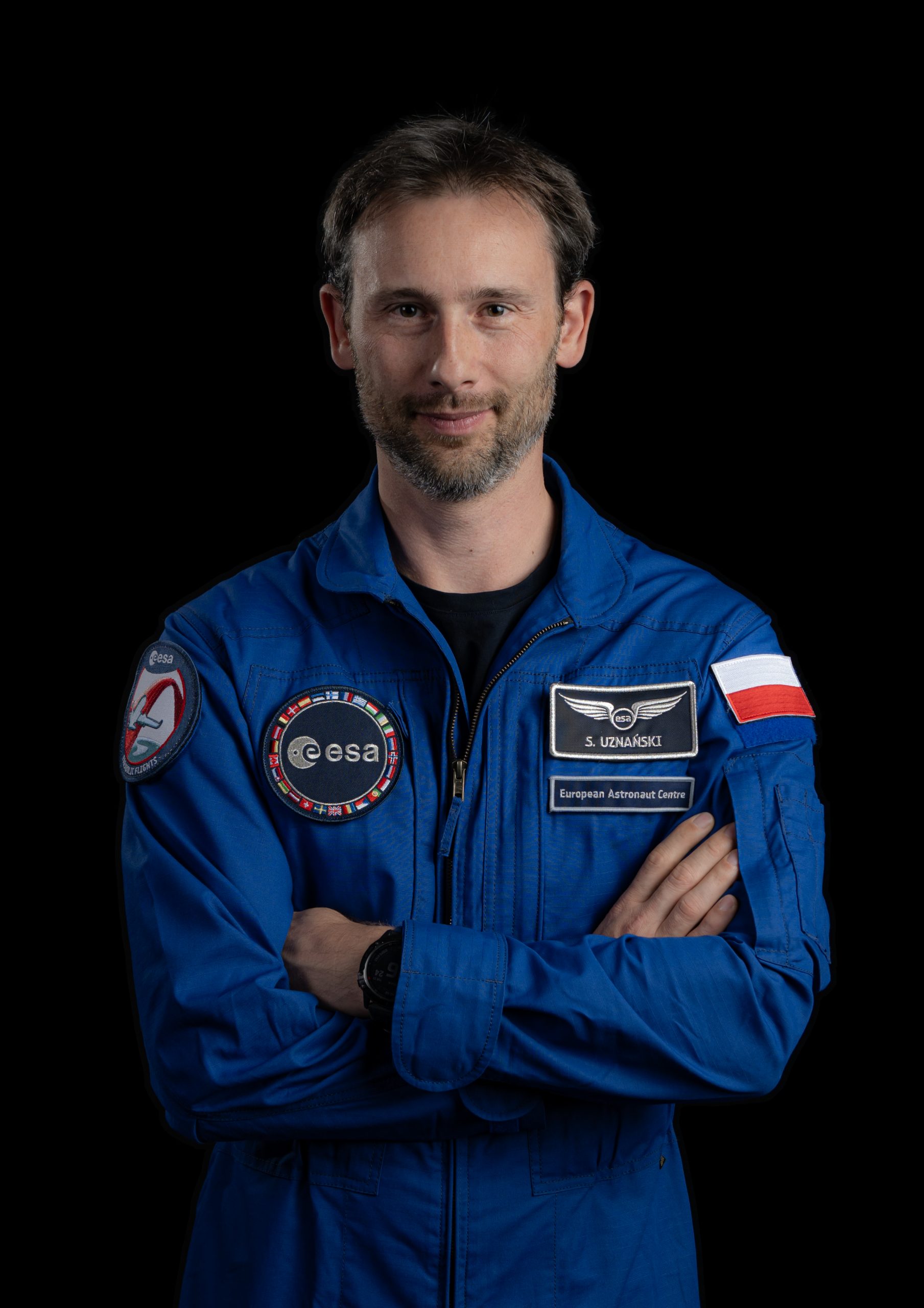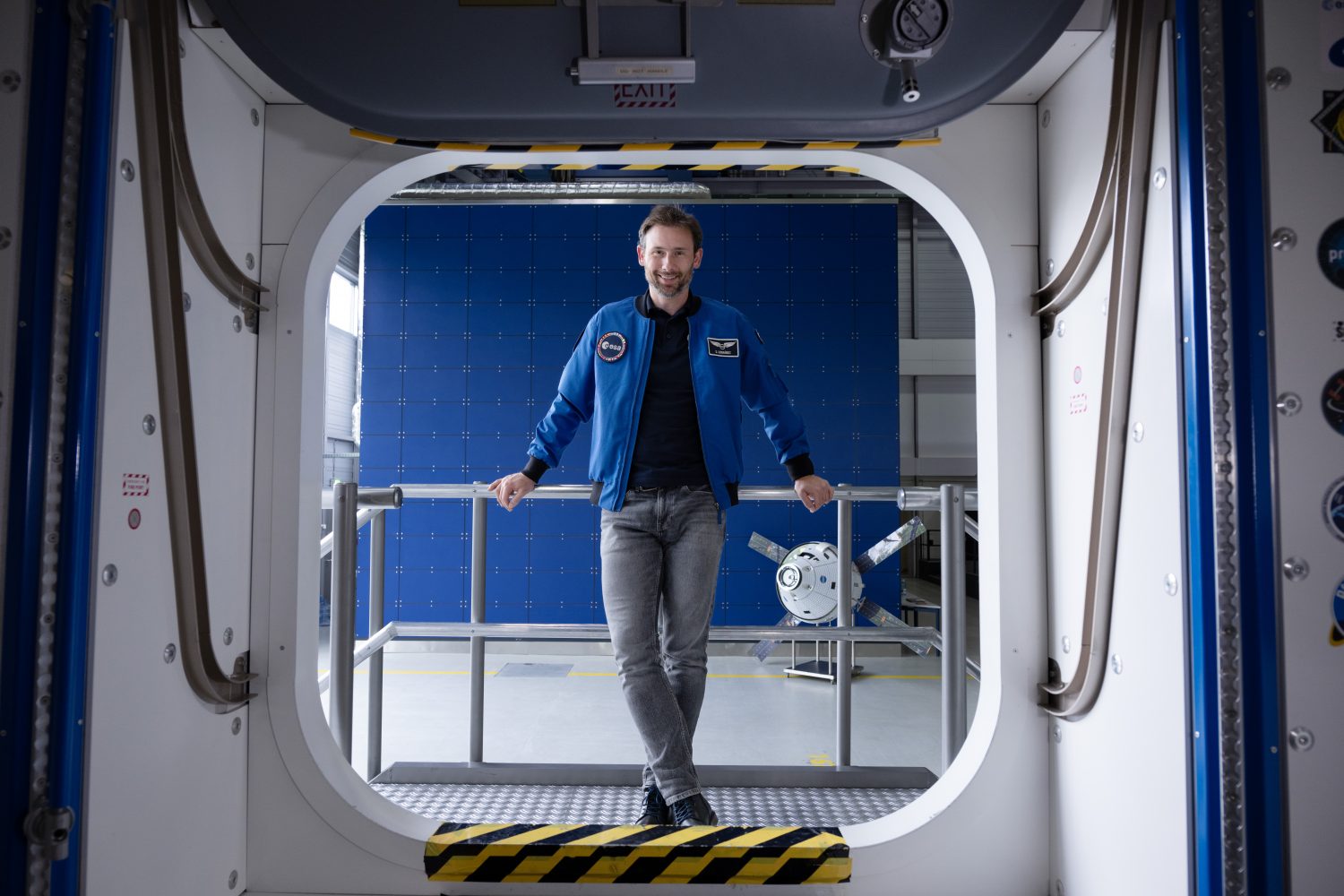Project astronaut Sławosz Uznański began his training at the European Astronaut Centre (EAC) in Cologne on 1 September 2023. Over the past months, he has been diligently preparing for his future space mission. Here’s a sneak peek into what these preparations looked like.
Back to the classroom
Astronaut training includes many hours of theoretical classes in subjects such as astrophysics, astrobiology, space medicine, and more. It’s similar to being back in school, where astronauts learn new subjects and refresh their existing knowledge from previous education and experiences. This was no different for Sławosz Uznański, but he is always open to new knowledge and curious about broadening his expertise, like most scientists.
Virtual Reality
Virtual reality walks on the International Space Station (ISS), both inside and outside, help astronauts prepare for orientation in microgravity. At EAC’s XR Lab, astronauts train to navigate the ISS, gaining a better understanding of how to move and operate in a microgravity environment. Sławosz quickly mastered this VR experience and can now navigate the virtual International Space Station with ease.

Sławosz training at the European Astronaut Centre using virtual reality. Credit: ESA
Cosmos Gym
Regular fitness training is essential for astronauts to stay healthy and fit. Sławosz has always led an active lifestyle and finds it easy to work out nearly every day. The European Astronaut Centre (EAC) has a dedicated facility called Cosmos Gym for this purpose. Whenever he’s in Cologne, Sławosz is at the gym almost daily. Even when traveling, he doesn’t skip his workouts – he always packs his running shoes to keep up his routine wherever he goes.
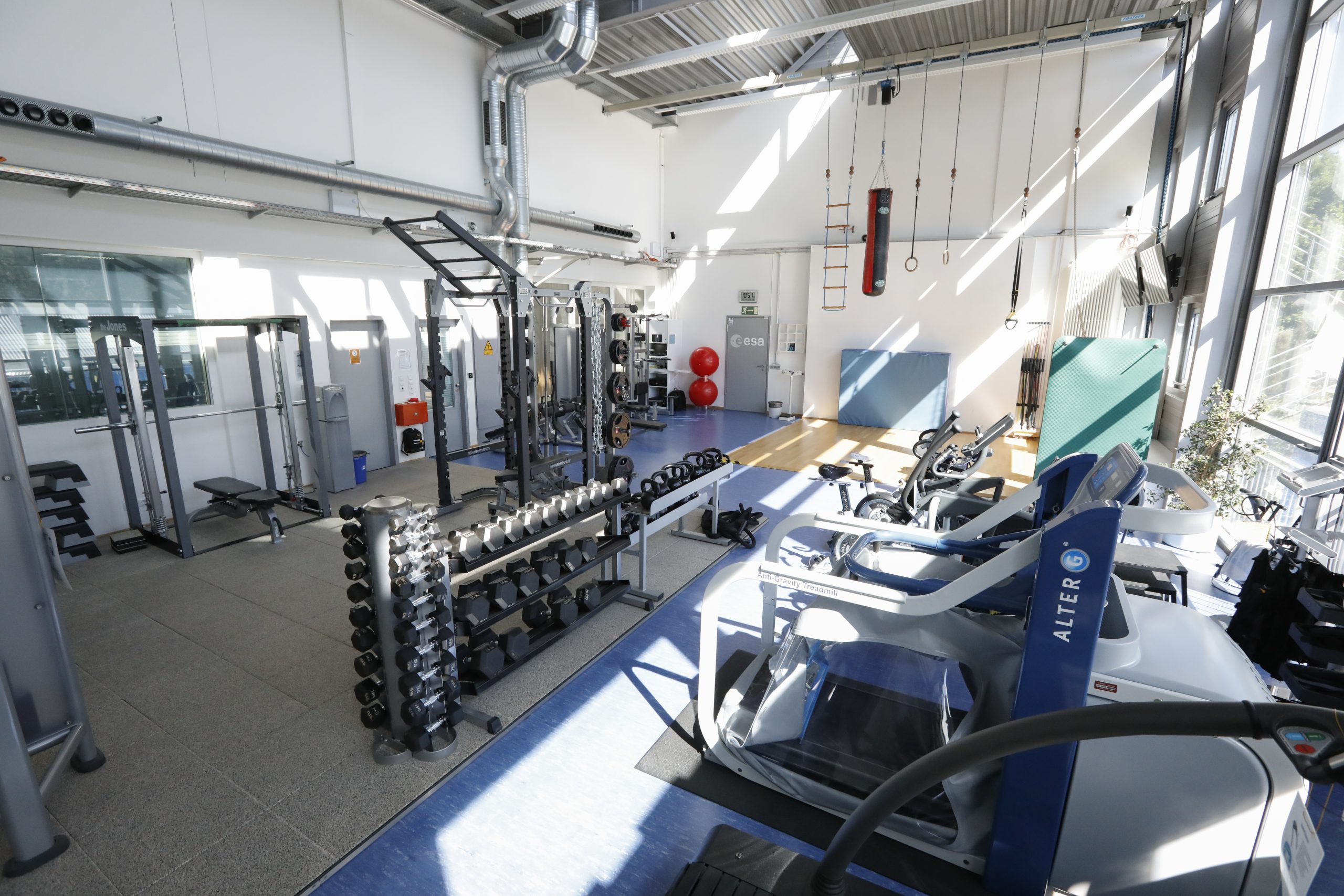
The “Cosmos Gym” at the European Astronaut Centre near Cologne, Germany. Credit: ESA
Medical training
As part of his medical training, Sławosz learned essential procedures such as drawing blood and suturing wounds. It is crucial for astronauts to be able to handle these basic medical tasks, both for providing assistance to crew members in need and for conducting scientific experiments, many of which involve working on their own bodies.
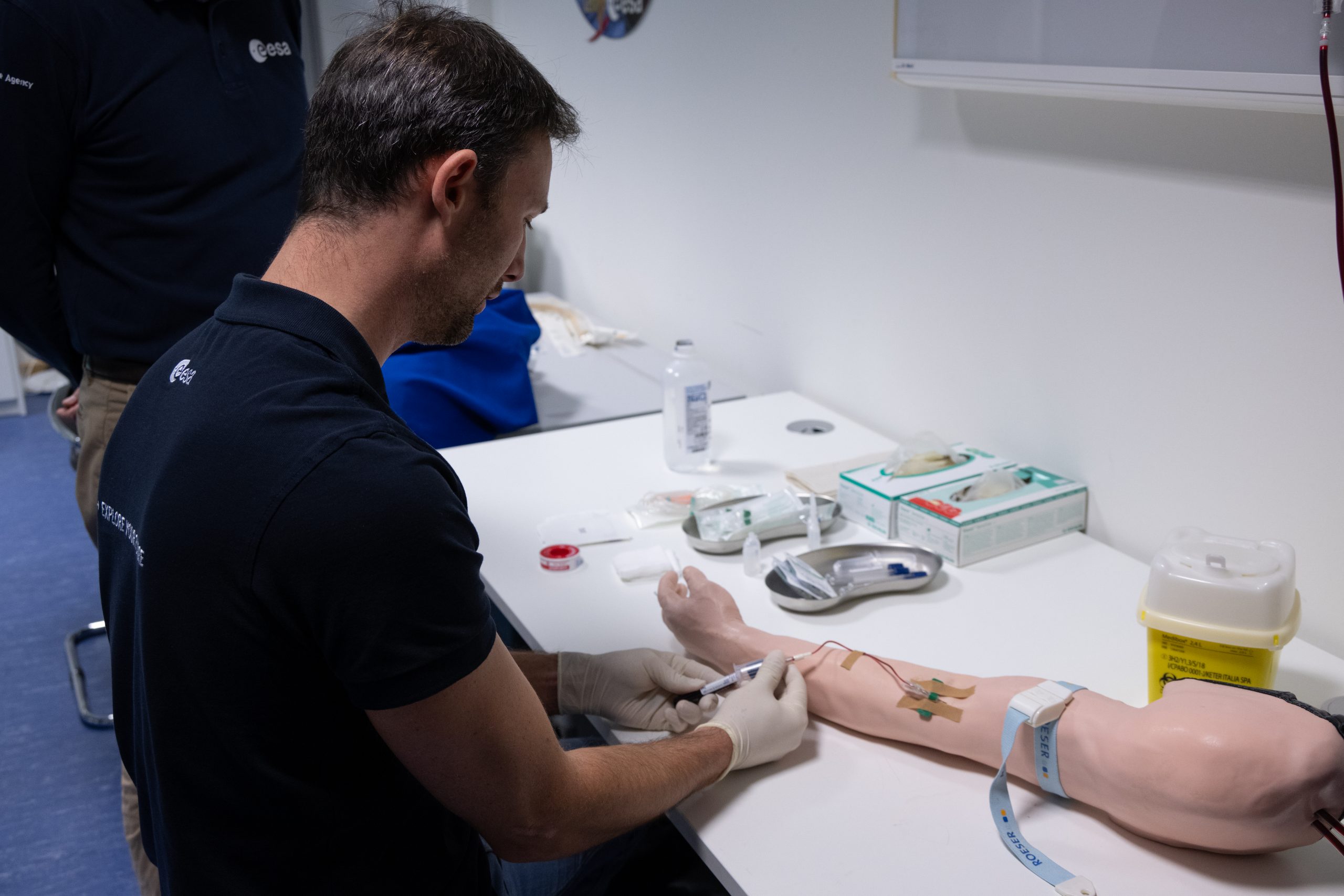

ESA project astronaut Sławosz Uznański learned essential procedures such as drawing blood and suturing wounds as part of his medical training. Credit: ESA
Guest diver at the NBF
The Neutral Buoyancy Facility (NBF) at EAC is a 10-meter-deep pool where astronauts train for spacewalks. Although it wasn’t part of his project astronaut training, Sławosz participated in NBF activities as a guest diver. He had the opportunity to observe his colleagues performing various tasks on the Columbus laboratory mockup underwater.
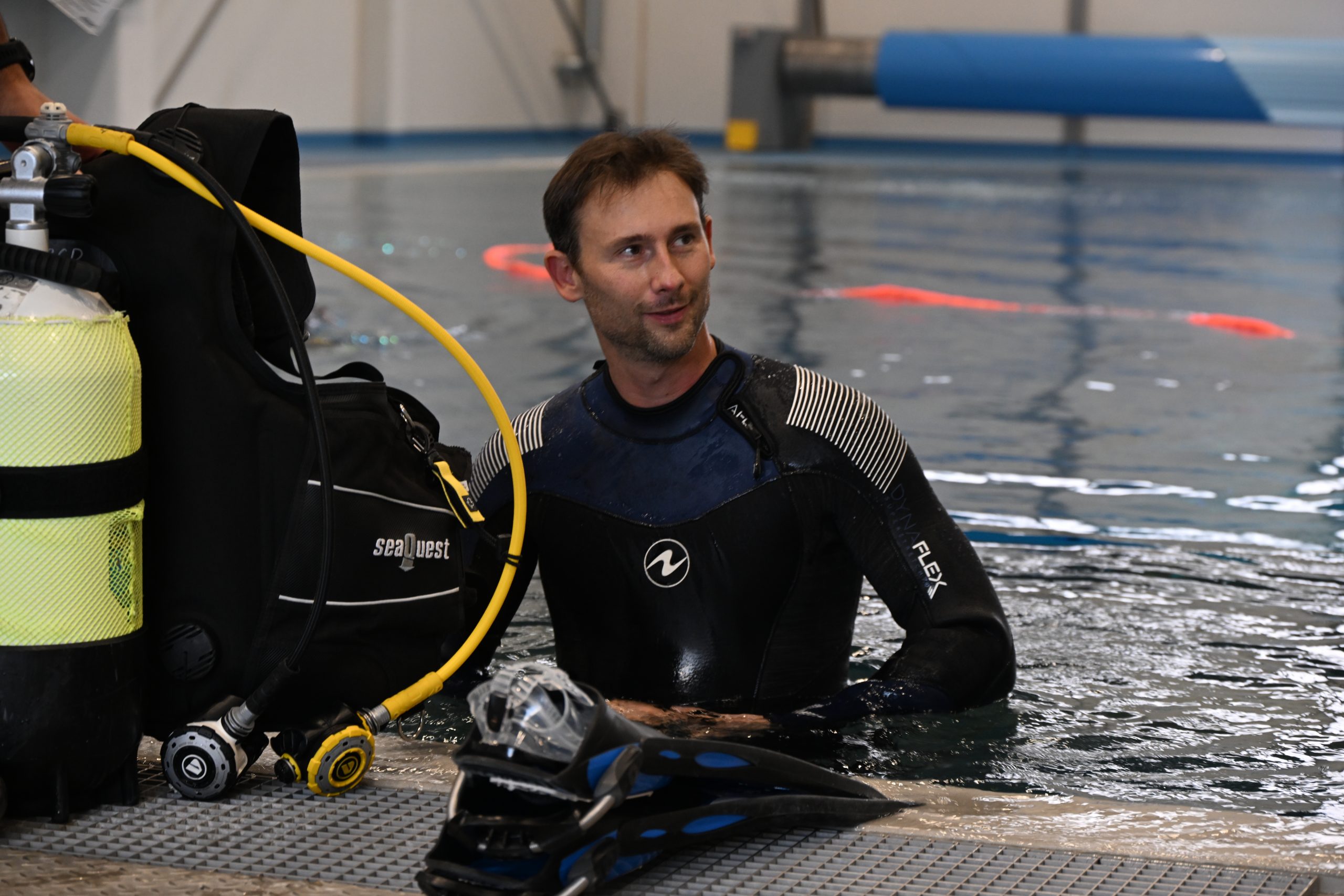

Sławosz participated in activities at the Neutral Buoyancy Facility at the European Astronaut Centre near Cologne, Germany. Credit: ESA
Cape Canaveral and Columbus Control Centre
Sławosz saw his colleague Marcus Wandt launching to space with the Axiom 3 mission from Cape Canaveral and then spent the duration of the mission in the Columbus Control Centre (Col–CC) in Germany. This was a unique opportunity for him to experience fully his fellow project astronaut’s mission while working full shifts co-sitting with operators on consoles, taking part in conferences with astronauts on the ISS and observing a similar mission to the one he might take part in.

ESA’s Columbus Control Centre, or Col-CC, located at the German Aerospace Center (DLR) facility in Oberpfaffenhofen, Germany. Credit: ESA
Parabolic flight
In April 2024, Sławosz joined his colleagues from the 2022 Astronaut Class in Bordeaux for a series of parabolic flights. These flights are an important part of astronaut training, allowing them to experience what microgravity feels like.
During a parabolic flight, a specially modified aircraft flies in a series of parabolic arcs. The plane climbs steeply, then dives down sharply, creating short periods of weightlessness inside the cabin. Each period of weightlessness lasts about 20 to 30 seconds and happens several times throughout the flight.
This training helps astronauts get used to the sensation of floating and performing tasks without gravity. By experiencing these conditions firsthand, they can better prepare for the challenges they’ll face when they are in space. For Sławosz and his fellow astronauts, it was a chance to practice moving and working in a microgravity environment before their actual missions.
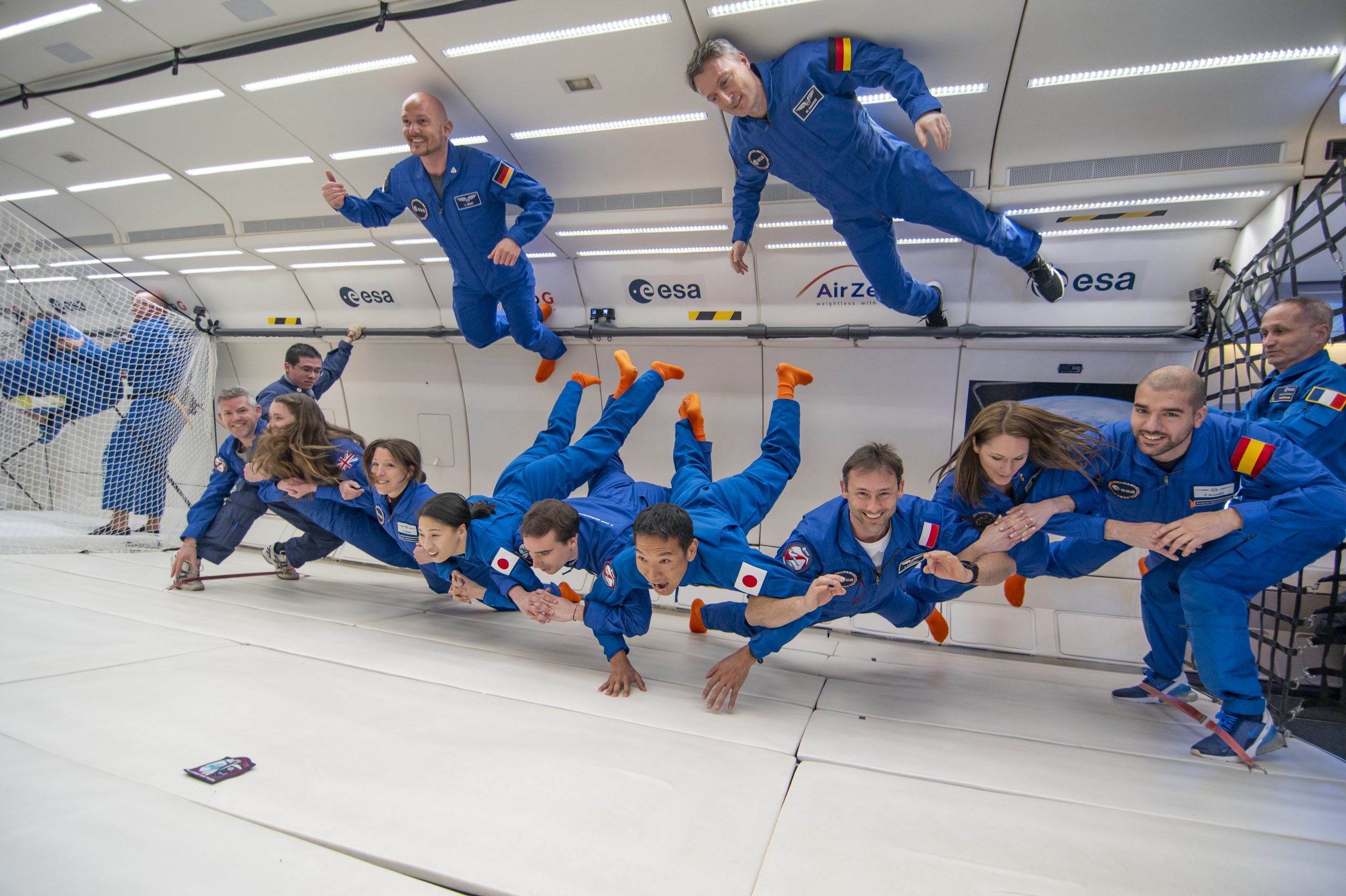
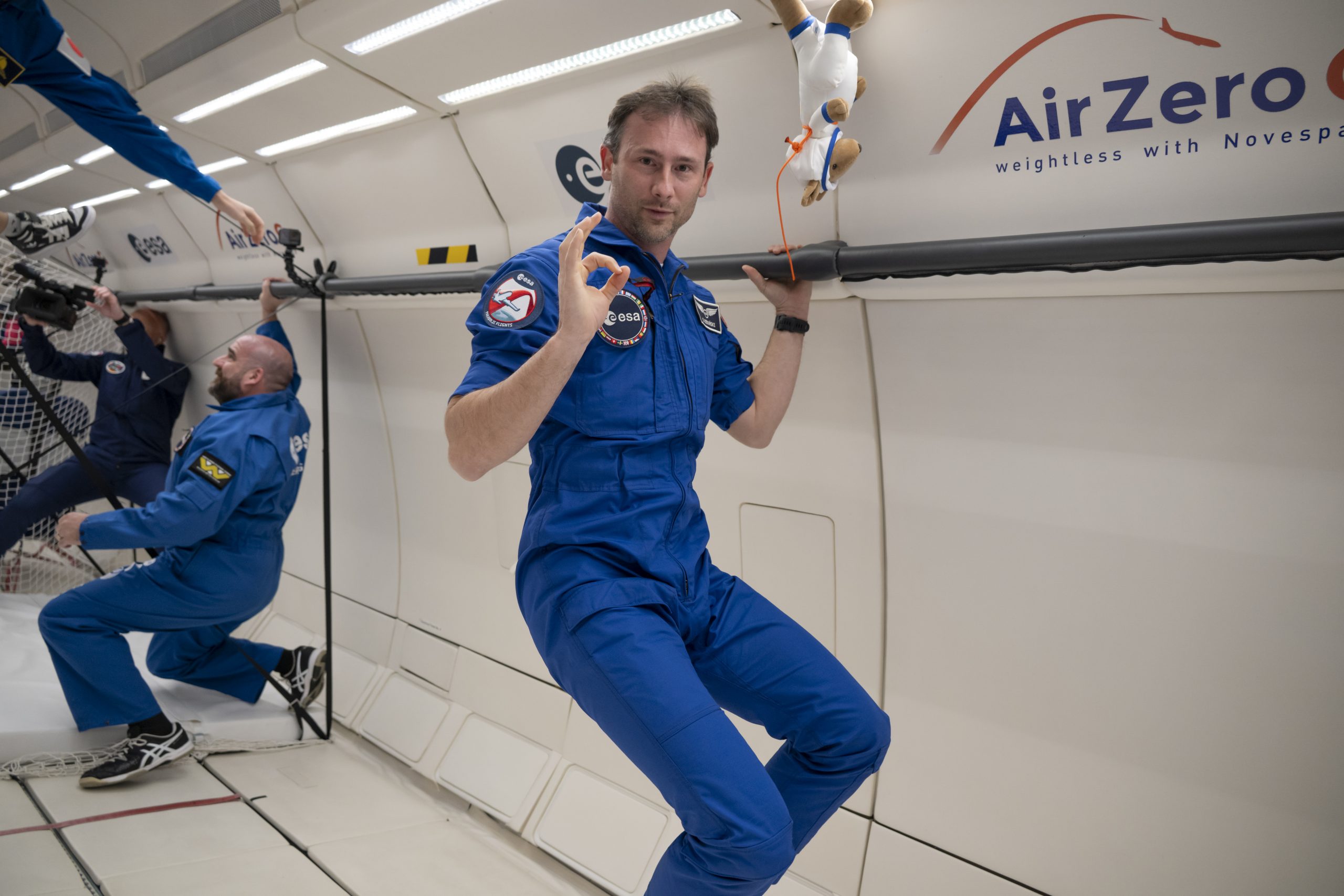
ESA project astronaut Sławosz Uznański joined his colleagues from the 2022 Astronaut Class in Bordeaux for a series of parabolic flights allowing them to experience what microgravity feels like. Credit: ESA-A. Conigli
HAM Radio
HAM radio, also known as amateur radio, is a form of communication used by enthusiasts around the world, and it’s an important tool for astronauts on the ISS. It allows for direct communication with people on Earth and can be used for both technical experiments and personal contacts.
As part of his training, Sławosz first participated in a pile-up training at ESTEC. This type of training simulates the experience of handling multiple incoming radio signals, a common scenario when communicating from space. Following that, he completed HAM radio training in Poland. There, he passed the Polish exam and earned his Polish license and call sign, further preparing him to use HAM radio effectively during his future mission.
Supporting payload development
Sławosz has also been actively supporting the payload development teams to initiate the experiments that will be performed in orbit. This is taking place at ESA’s technical heart in the Netherlands, The European Space Research and Technology Centre (ESTEC), together with the Polish Space Agency (POLSA) and Polish industry.
Indeed, Sławosz has had a busy few months with his project astronaut training, tackling everything from classroom lessons and virtual reality sessions to fitness routines, medical training and underwater tasks.
He got a glimpse of microgravity, learned how to take blood samples, and passed the Polish HAM radio exam. But this is just the beginning;. Sławosz still has many more training tasks and challenges ahead as he continues to prepare for his space mission.


